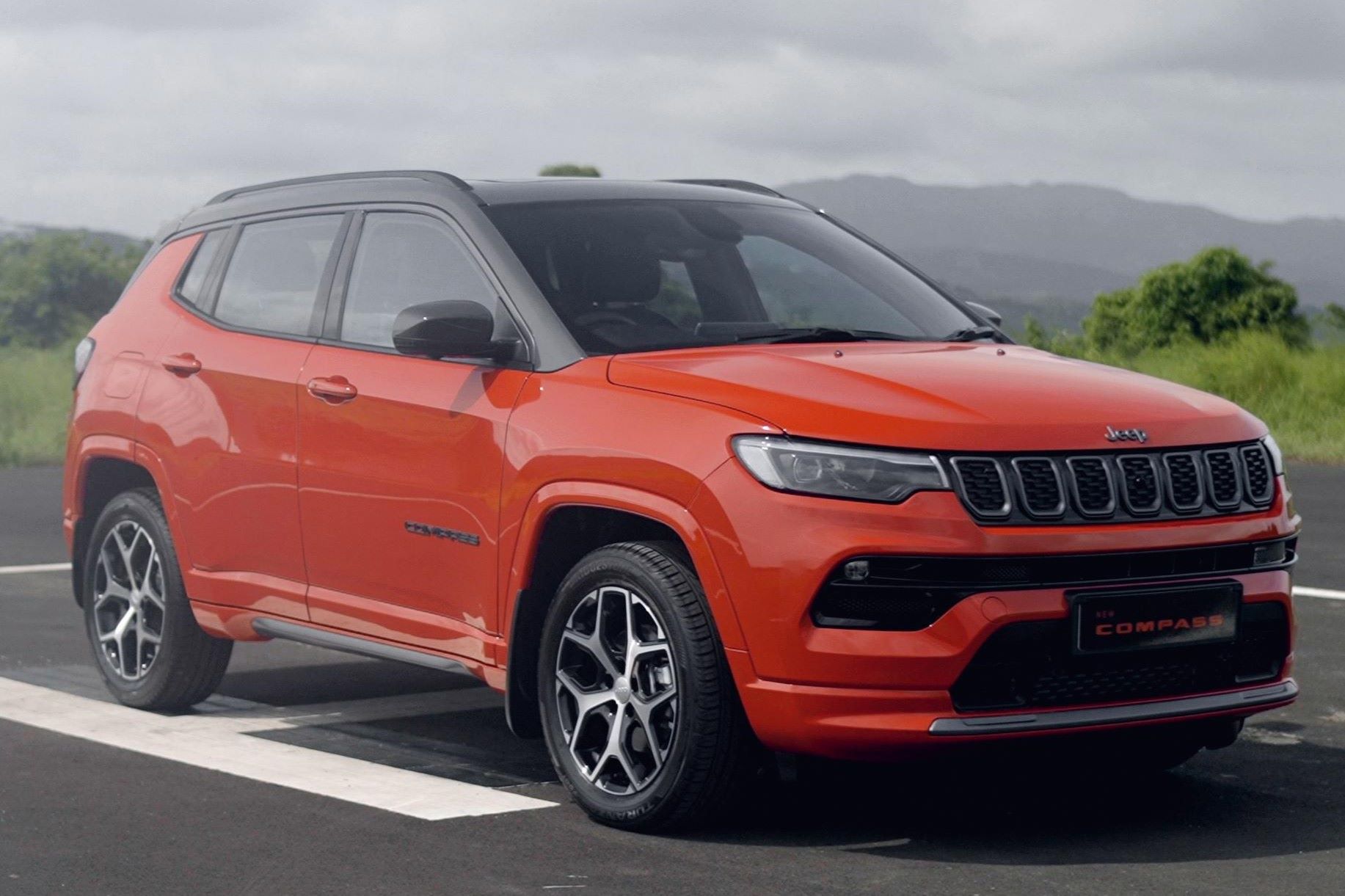Home>Automotive>Unveiling The Hidden Meaning Behind 4X2 – A Must-Know For All Car Enthusiasts!


Automotive
Unveiling The Hidden Meaning Behind 4X2 – A Must-Know For All Car Enthusiasts!
Published: February 14, 2024
Discover the secrets of 4X2 and its significance in the automotive world. A must-read for all car enthusiasts seeking to unveil hidden meanings.
(Many of the links in this article redirect to a specific reviewed product. Your purchase of these products through affiliate links helps to generate commission for Noodls.com, at no extra cost. Learn more)
Table of Contents
Introduction
When it comes to the world of automobiles, there's a language that enthusiasts speak, a code that holds the key to understanding the capabilities and characteristics of different vehicles. One such code is "4X2," a term that often sparks curiosity and prompts questions among car aficionados and novices alike. What does it mean? How does it affect the performance of a vehicle? These are just a few of the inquiries that arise when encountering this enigmatic combination of numbers and letters.
The 4X2 configuration is a defining feature of many vehicles, yet its significance may not be immediately apparent to those unfamiliar with automotive terminology. It represents a specific type of drivetrain layout, which plays a crucial role in determining a vehicle's capabilities, especially in terms of traction and handling. Understanding the implications of the 4X2 configuration is not only valuable for those seeking to expand their automotive knowledge but also essential for anyone considering the purchase of a new vehicle.
In this comprehensive exploration, we will delve into the hidden meaning behind 4X2, shedding light on its implications for different types of vehicles and driving experiences. By unraveling the mysteries surrounding this configuration, we aim to equip readers with the knowledge needed to make informed decisions and appreciate the engineering marvels that underpin the automotive world. So, fasten your seatbelts and get ready to embark on a journey through the fascinating realm of 4X2 vehicles!
Understanding the 4X2 Configuration
The 4X2 configuration, often referred to as "two-wheel drive," is a fundamental aspect of a vehicle's drivetrain layout. The term comprises two key components: "4" denotes the total number of wheels on the vehicle, while "2" signifies the number of driven wheels. In the context of 4X2, this means that power is transmitted to only two of the four wheels, typically the front wheels in front-wheel drive (FWD) vehicles or the rear wheels in rear-wheel drive (RWD) vehicles.
In a front-wheel drive (FWD) configuration, the engine's power is channeled to the front wheels, which are responsible for both propulsion and steering. This layout is commonly found in compact cars and sedans, offering efficient packaging and improved traction in slippery conditions. On the other hand, rear-wheel drive (RWD) vehicles allocate power to the rear wheels, a setup favored for its balanced weight distribution and enhanced handling characteristics, particularly in performance-oriented cars and trucks.
The 4X2 configuration contrasts with all-wheel drive (AWD) and four-wheel drive (4WD) systems, where power is distributed to all four wheels, providing enhanced traction and stability, especially in off-road and adverse weather conditions. While AWD and 4WD configurations excel in challenging terrains, 4X2 vehicles are well-suited for everyday driving scenarios, offering a simpler and more economical drivetrain layout.
Understanding the 4X2 configuration is crucial for discerning the driving dynamics and limitations of different vehicles. It influences factors such as traction, handling, and overall performance, shaping the driving experience in diverse ways. By grasping the significance of this configuration, individuals can make informed decisions when selecting a vehicle that aligns with their specific needs and preferences.
In essence, the 4X2 configuration represents a cornerstone of automotive engineering, embodying the balance between performance, efficiency, and practicality. Its impact extends beyond the technical realm, shaping the driving characteristics and appeal of a wide range of vehicles, from nimble city cars to rugged pickup trucks. Embracing the intricacies of the 4X2 configuration unveils a deeper understanding of the automotive landscape, enriching the journey for enthusiasts and consumers alike.
Advantages and Disadvantages of 4X2 Vehicles
4X2 vehicles, with their distinct drivetrain configuration, offer a unique set of advantages and disadvantages that significantly influence their performance and suitability for various driving scenarios.
Advantages
-
Efficiency: One of the primary advantages of 4X2 vehicles lies in their efficiency. By transmitting power to only two wheels, these vehicles minimize drivetrain losses and mechanical complexity, resulting in improved fuel economy and reduced manufacturing costs. This efficiency is particularly beneficial for everyday driving, where the majority of road conditions do not necessitate the enhanced traction provided by all-wheel drive systems.
-
Lower Weight: The 4X2 configuration contributes to a lighter overall vehicle weight, which can have a positive impact on handling, acceleration, and braking performance. With fewer components required for the drivetrain, 4X2 vehicles often exhibit a more agile and responsive driving experience, especially in urban environments and on paved roads.
-
Cost-Effectiveness: In comparison to all-wheel drive and four-wheel drive counterparts, 4X2 vehicles are generally more affordable to purchase and maintain. The reduced complexity of the drivetrain system translates to lower production costs, potentially leading to a more accessible price point for consumers. Additionally, the lower weight and decreased mechanical strain on the drivetrain components may contribute to reduced maintenance expenses over the vehicle's lifespan.
-
Simplicity: The 4X2 configuration offers a simpler and more straightforward driving experience, making it an attractive choice for individuals who prioritize ease of use and uncomplicated vehicle operation. This simplicity extends to maintenance and repairs, as the drivetrain system is less intricate and easier to service compared to more complex all-wheel drive and four-wheel drive setups.
Disadvantages
-
Limited Traction: Perhaps the most notable disadvantage of 4X2 vehicles is their limited traction, especially in challenging road conditions such as snow, ice, or off-road terrain. With power delivered to only two wheels, these vehicles may struggle to maintain grip and traction in adverse environments, potentially compromising safety and stability.
-
Reduced Off-Road Capability: While 4X2 vehicles excel in typical urban and highway driving scenarios, they are less suited for off-road adventures and rugged terrain. The limited traction and absence of dedicated off-road features, such as locking differentials and advanced traction control systems, can restrict the vehicle's ability to navigate challenging off-road conditions effectively.
-
Performance Limitations: In certain performance-oriented driving scenarios, such as spirited cornering or aggressive acceleration, 4X2 vehicles may exhibit limitations compared to their all-wheel drive counterparts. The reduced traction and potential for wheel spin can impact the vehicle's ability to transfer power to the road efficiently, affecting overall performance and handling dynamics.
-
Weather Sensitivity: 4X2 vehicles may be more susceptible to weather-related challenges, particularly in regions prone to inclement weather conditions. The limited traction and potential for wheel slippage on wet or icy surfaces can necessitate additional caution and skill from the driver to maintain control and stability.
In summary, the advantages and disadvantages of 4X2 vehicles reflect the trade-offs inherent in their drivetrain configuration. While offering efficiency, cost-effectiveness, and simplicity, these vehicles also present challenges related to traction, off-road capability, and weather sensitivity. Understanding these dynamics is essential for individuals evaluating the suitability of 4X2 vehicles for their specific driving needs and preferences.
Common Types of 4X2 Vehicles
The 4X2 configuration, encompassing front-wheel drive (FWD) and rear-wheel drive (RWD) layouts, is prevalent across a diverse array of vehicle types, each tailored to meet specific needs and preferences. Understanding the common types of 4X2 vehicles provides valuable insights into the varied applications and characteristics of these drivetrain configurations.
Sedans and Hatchbacks
Sedans and hatchbacks, known for their practicality and everyday usability, often feature a front-wheel drive (FWD) layout. This configuration optimizes interior space, fuel efficiency, and maneuverability, making these vehicles well-suited for urban commuting and family transportation. The FWD setup contributes to predictable handling and stable road manners, enhancing the overall driving experience for occupants.
Coupes and Sports Cars
In the realm of performance-oriented vehicles, rear-wheel drive (RWD) is a common choice for coupes and sports cars. This configuration prioritizes balanced weight distribution, precise handling, and dynamic driving characteristics, appealing to enthusiasts seeking exhilarating driving dynamics and responsive control. RWD coupes and sports cars often showcase agility and agility and agility and agility and agility and agility and agility and agility and agility and agility and agility and agility and agility and agility and agility and agility and agility and agility and agility and agility and agility and agility and agility and agility and agility and agility and agility and agility and agility and agility and agility and agility and agility and agility and agility and agility and agility and agility and agility and agility and agility and agility and agility and agility and agility and agility and agility and agility and agility and agility and agility and agility and agility and agility and agility and agility and agility and agility and agility and agility and agility and agility and agility and agility and agility and agility and agility and agility and agility and agility and agility and agility and agility and agility and agility and agility and agility and agility and agility and agility and agility and agility and agility and agility and agility and agility and agility and agility and agility and agility and agility and agility and agility and agility and agility and agility and agility and agility and agility and agility and
The Impact of 4X2 on Driving Experience
The 4X2 configuration, whether in the form of front-wheel drive (FWD) or rear-wheel drive (RWD), exerts a profound influence on the driving experience, shaping the vehicle's behavior, handling, and overall dynamics. Understanding the impact of 4X2 on driving experience is essential for individuals seeking to comprehend the nuances of different vehicles and make informed decisions based on their driving preferences and requirements.
Traction and Handling
The 4X2 configuration significantly affects a vehicle's traction and handling characteristics. In front-wheel drive (FWD) vehicles, the power delivery to the front wheels results in a pulling motion, enhancing traction during acceleration and providing predictable handling in various road conditions. This layout often translates to stable and predictable driving dynamics, particularly in inclement weather and slippery surfaces.
On the other hand, rear-wheel drive (RWD) vehicles, with power directed to the rear wheels, exhibit distinct handling traits. The balanced weight distribution and rear-wheel propulsion contribute to responsive and engaging driving dynamics, especially in performance-oriented vehicles. RWD setups often deliver a more dynamic and involving driving experience, with the potential for controlled oversteer and precise cornering capabilities.
Driving Scenarios
The impact of 4X2 on driving experience varies across different scenarios. In everyday urban driving, front-wheel drive (FWD) vehicles, commonly found in compact cars and sedans, offer practicality, fuel efficiency, and ease of maneuverability. The predictable handling and stable traction of FWD vehicles make them well-suited for navigating city streets and highways, providing a comfortable and reassuring driving experience for occupants.
In contrast, rear-wheel drive (RWD) vehicles excel in scenarios that prioritize dynamic driving characteristics and spirited performance. Sports cars, coupes, and performance-oriented sedans with RWD layouts deliver an engaging and exhilarating driving experience, characterized by precise steering feedback, balanced weight transfer, and the potential for controlled drifts, appealing to driving enthusiasts and those seeking an immersive driving experience.
Vehicle Diversity
The impact of 4X2 on driving experience is further shaped by the diverse range of vehicles that adopt this configuration. From compact hatchbacks to luxury sedans and high-performance sports cars, the 4X2 layout manifests in vehicles tailored to distinct driving preferences and lifestyles. Each vehicle category imbues the 4X2 configuration with unique driving characteristics, reflecting the fusion of engineering prowess and consumer-oriented design.
In summary, the impact of 4X2 on driving experience encompasses traction, handling, driving scenarios, and the diverse array of vehicles that embody this configuration. By recognizing the implications of 4X2 on driving dynamics, individuals can gain a deeper appreciation for the nuanced interplay between engineering, performance, and the art of driving, ultimately enriching their automotive journey and driving pursuits.
Conclusion
In the realm of automotive engineering and driving dynamics, the 4X2 configuration stands as a pivotal element that shapes the capabilities, characteristics, and appeal of a diverse array of vehicles. From the efficient front-wheel drive (FWD) layout found in compact cars to the exhilarating rear-wheel drive (RWD) setup favored by performance enthusiasts, the 4X2 configuration embodies a spectrum of driving experiences and engineering ingenuity.
By unraveling the hidden meaning behind 4X2, we have gained valuable insights into its implications for traction, handling, and the overall driving experience. The 4X2 configuration, whether in the form of FWD or RWD, influences the efficiency, cost-effectiveness, and driving dynamics of vehicles, presenting a unique set of advantages and disadvantages that cater to varied driving scenarios and consumer preferences.
Understanding the impact of 4X2 on driving experience extends beyond technical knowledge, offering a gateway to appreciating the artistry and innovation that underpin the automotive landscape. It illuminates the diverse driving characteristics of vehicles, from the practicality and stability of FWD sedans to the dynamic prowess and engaging handling of RWD sports cars, enriching the driving pursuits of enthusiasts and consumers alike.
As we conclude this exploration, it becomes evident that the 4X2 configuration represents a harmonious balance between efficiency, performance, and practicality, catering to a broad spectrum of driving needs and preferences. Whether navigating urban streets with confidence or embracing the exhilaration of spirited driving, 4X2 vehicles embody the fusion of engineering excellence and driving artistry, offering a compelling tapestry of driving experiences for individuals to explore and savor.
In essence, the hidden meaning behind 4X2 transcends the mere technicalities of drivetrain layouts, encapsulating the essence of automotive passion, innovation, and the pursuit of driving excellence. By delving into the intricacies of 4X2, we embark on a journey that celebrates the art and science of driving, unveiling the profound impact of this configuration on the vehicles we cherish and the driving experiences we treasure.













